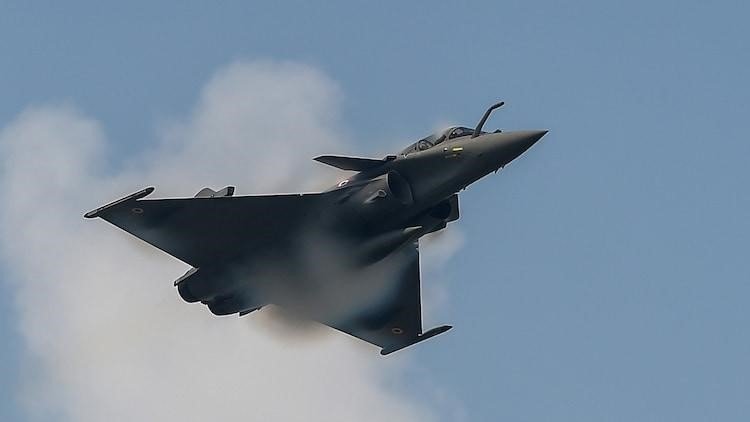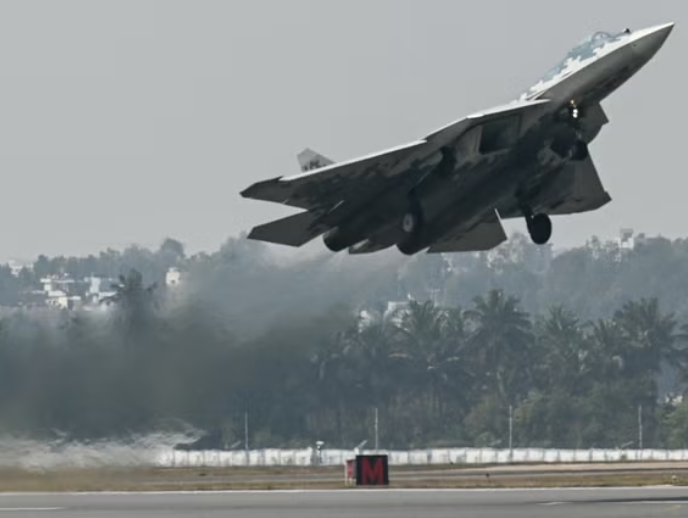Despite being plagued by persistent delays in delivery, the Indian Air Force (IAF) is set to receive at least six Tejas Light Combat Aircraft (LCA) by March 2026, according to Hindustan Aeronautics Ltd (HAL) Chairperson and Managing Director D K Sunil. HAL, which is producing the indigenous aerial platform, was under fire from IAF Chief Air Chief Marshal A P Singh in February over the aircraft’s delayed deliveries to the IAF. The criticism was particularly significant considering the pace at which the IAF’s count of fighter aircraft squadrons continues to deplete, with only 31 currently operational against an officially sanctioned strength of 42.
On July 1, 2024, the LCA will complete eight years of service in the IAF. Christened Tejas in 2003, the aircraft is a versatile multirole platform which can fulfil air defence, maritime reconnaissance, and strike roles (see Figure 1). Its intrinsically unstable design offers easy handling and heightened manoeuvrability – a capability further augmented by its multimode airborne radar, helmet-mounted display, self-protection suite, and laser designation pod.
Figure 1: The LCA Tejas
Source: LCA Tejas
In 2016, 45 Squadron – the ‘Flying Daggers’ – became the first IAF squadron to induct the Tejas, followed by the 18 Squadron – the ‘Flying Bullets’ – in May 2020. The IAF’s intent to promote India’s domestic defence-aerospace industry is evident from its efforts to showcase the platform at various international events, but more so by its order for 83 LCA Mk-1A, which is expected to feature improved avionics, an active electronically scanned array (AESA) radar, a superior electronic warfare suite, as well as beyond-visual-range (BVR) missile capability. Inductions and further orders have, however, been hindered by dogged supply issues, including the following:
Continued dependence on the United States could be a dampener for further LCA orders by the IAF. It is noteworthy that the HAL chief pointedly attributed LCA delivery delays to the delay in receiving engines for the platform from the US firm GE Aerospace, the engine supplier
- Subcontracting problems: The LCA programme has been afflicted by the practice of subcontracting key components to smaller and frequently unregulated suppliers, leading to quality issues and manufacturing delays, as these firms often lack the expertise and quality control needed to meet the stringent standards of the defence aerospace industry.
- Indigenous Engine Failure: The failure of India’s Defence Research and Development Organisation’s Gas Turbine Research Establishment laboratory to develop the Kaveri engine intended to power the Tejas, in time, necessitated the import of GE F-404-IN20 engines from the United States (US) to continue developmental activities.
- Execution Bottlenecks: These include design alterations and delays in concluding task packages by various work centres, contributing to the programme running significantly behind schedule, with the initial operational clearance and final operational clearance achieved only in December 2013 and January 2019, respectively, as opposed to the contracted 2011 and 2016 procurement deadlines, respectively.
Continued dependence on the US should also be a dampener for further LCA orders by the IAF. It is noteworthy that the HAL chief pointedly attributed LCA delivery delays to the delays in receiving engines for the platform from the US firm GE Aerospace, the engine supplier. The American firm subsequently clarified that it is working with HAL to overcome problems related to the delay in engine supplies. However, this ongoing saga, combined with the track record of operational restrictions on the usage of various American defence platforms and systems exports to different countries, implies that over-reliance on the US for critical military capabilities could hurt operational readiness, especially during conflict. It would, therefore, be wise for the IAF to continue operating adequate fighter squadrons largely insulated from US supply chain googlies and strings attached. To this end, the following are the two main alternative operational platforms available to the IAF:
Given limited budgetary support for large-scale capital acquisitions by the armed forces, as illustrated by the modest 4.6% on-year increase in capital outlay, the IAF will likely have to rely on limited acquisitions of a mix of foreign-origin fighter aircraft, maybe a couple of squadrons each of Rafales and Su-57s
- Additional Rafales: The IAF is reportedly preparing to acquire 40 more Rafale fighter aircraft from France via a government-to-government agreement, to consolidate India’s air power matrix around the French fighter jet.
- Su-57: Despite the IAF’s refusal to acquire this Russian stealth fighter jet purportedly due to its steep price, poor engineering, and engine unreliability, the aircraft remains the only operational fifth-generation fighter platform on offer to the IAF with extensive technology transfer.
The induction of additional Rafales into the IAF would significantly increase the IAF’s combat capabilities (see Figure 2). The fighter jet, reputed for its modern avionics, Meteor BVR missiles, SCALP cruise missiles, as well as India-specific improvements and customisations, would grant the IAF a formidable advantage in air-to-air combat and precision strikes. Platform commonality between the IAF’s Rafales and the Indian Navy’s Rafale-M aircraft also offers smooth logistics and shared training, further increasing the IAF’s operational preparedness.

On the other hand, the benefits of inducting the Sukhoi Su-57 into the IAF are multifaceted, enhancing combat capacity, pushing the Indian defence aerospace sector’s technological frontiers, and potentially boosting India’s geopolitical standing (see Figure 3). The jets’ advanced characteristics, including stealth, super manoeuvrability, and AI-integration, would situate India as a potential leader in air combat and defence self-reliance.
The proposed collaboration with Russia for joint manufacturing and transfer-of-technology (ToT) aligns with the Indian government’s ‘Make in India’ and ‘Aatmanirbhar Bharat’ initiatives, offering a route to the indigenous production of a fifth-generation fighter aircraft. The partnership could also increase India’s capacity to withstand and counter threats posed by the China-Pakistan nexus, especially in frontier regions like Ladakh and those adjoining the Line of Control.
Additional Rafales would significantly increase the IAF’s combat capabilities. The fighter jet, reputed for its modern avionics, Meteor BVR missiles, SCALP cruise missiles, and India-specific improvements and customisations, would grant the IAF a formidable advantage in air-to-air combat and precision strikes
There are, however, multiple challenges involved in the IAF acquiring the Su-57, including:
- Unprepared Engine: The AL-51 engine, critical for the Su-57’s stealth and performance, is still undergoing testing and is not yet prepared for manufacturing.
- Payment Mechanism: The risk of secondary sanctions under the US’s Countering America’s Adversaries Through Sanctions Act (CAATSA) complicates any potential acquisition of the Su-57, with no robust payment mechanism yet in place to enable such a multi-billion-dollar deal.
- Technology Transfer: The IAF is circumspect about the ToT on offer from Russia, especially after the erstwhile fifth-generation fighter aircraft programme’s failure, with the former of the view that the platform still suffers from multiple deficiencies which would need substantial modifications to meet its criteria.

There are, conversely, benefits that may accrue to India’s indigenous stealth fighter aircraft – advanced medium combat aircraft (AMCA) – programme because of LCA production delays, stemming from lessons learnt from the LCA programme’s challenges as well as increased policy urgency surrounding the AMCA programme due to LCA’s delays. The former includes process optimisation insights on financing delays, engine acquisition challenges, and bureaucratic red tape, that could help streamline AMCA’s developmental pipeline; as well as proactive risk mitigation in respect of engine agreement delays, testing infrastructure-related challenges, etc., by instituting timely contingency plans. On the other hand, the latter is manifesting in terms of increased supply chain preparedness including indigenous detection systems like the Uttam AESA radar, avionics, and weapons integration; the adoption of a modular design approach enabling incremental improvements without postponing initial production; and the government’s decision to break HAL’s long-standing monopoly by pressing for a public-private partnership model.
Unfortunately, though, the AMCA cannot populate IAF squadrons as an alternative to the delayed LCA because even in the most optimistic of scenarios, it is unlikely to be available in sufficient numbers before the mid-2030s due to the following reasons:
- Technological Hurdles: Designed to be a fifth-generation fighter jet, the AMCA needs advanced technologies like stealth capabilities, supercruise (the ability to cruise at supersonic speeds without deploying fuel-guzzling afterburners), and sensor fusion – all of which are difficult to develop and require significant time and resources.
- Engine Delay: While the AMCA Mk-1 will be powered by the GE F-414 engine – perpetuating American dependence over yet another generation of India’s frontline combat capabilities without the engine providing enough thrust to optimally power a fifth-generation aircraft – the development of a truly worthy successor for the Mk-2 remains in its nascency and is likely to face major challenges and delays.
- Unrealistic Production Timeline: A retired senior IAF officer has expressed reservations regarding the ambitious timelines set for the AMCA, indicating that the programme may only be at the prototype phase by the mid-2030s.
- Strategic Implications: While the AMCA would represent major progress toward self-reliance in defence production, the IAF will have to acquire more foreign fighter jets in the interim to maintain operational readiness, thereby potentially hindering subsequent AMCA inductions due to budget constraints, among others.
The proposed collaboration with Russia for joint manufacturing and transfer-of-technology aligns with ‘Make in India’ and ‘Aatmanirbhar Bharat’ initiatives. The partnership may also counter the threats posed by the China-Pakistan nexus, especially in frontier regions like Ladakh and those adjoining the LAC
A holistic assessment of the situation about the LCA programme therefore reveals that sufficient numbers of the fighter aircraft will not be available in time to arrest the steady decline of the IAF’s squadron count over the next decade and beyond, forcing the IAF to seek foreign-origin alternatives including additional Rafale or Su-57 jets, each of which comes with its own tactical and strategic implications. While India’s futuristic AMCA programme is likely to benefit from slower LCA inductions, it cannot be positioned as an alternative to the latter, given AMCA’s share of challenges and probable timeline overruns.
Given limited budgetary support for large-scale capital acquisitions by the armed forces, as illustrated by the modest 4.6 per cent on-year increase in capital outlay, it is likely that the IAF will have to rely on limited acquisitions of a mix of foreign-origin fighter aircraft, e.g., a couple of squadrons each of Rafales and Su-57s. Without economies of scale, such small procurements will entail higher unit costs. Alternatively, a larger number of a single type of fighter jet could be acquired, entailing some economies of scale but also increased dependence on a single foreign original equipment manufacturer. The choice is a difficult one, but needs to be made expeditiously to arrest the declining squadron strength of the IAF. Given the precision strikes conducted successfully from standoff ranges by the IAF’s Rafales during Operation Sindoor, my money is on the IAF purchasing more of these over the coming years.
The writer is an independent researcher with publications spanning diverse fields, including terrorism and counter-terrorism, foreign policy, climate finance, microfinance, maritime security, corporate finance, and industrial organisation.






